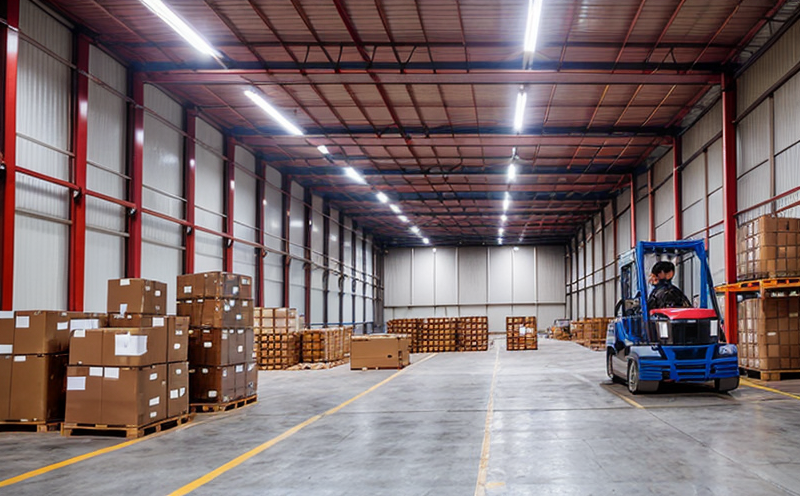ISO 2881 Package Climatic Resistance Testing
The ISO 2881 package climatic resistance testing is a critical procedure used to evaluate the performance of packaging materials under extreme environmental conditions. This test ensures that packaging materials can withstand harsh climates and protect the contents during transportation, storage, or handling.
Compliance with this standard is essential for industries where product integrity and quality are paramount. For instance, in pharmaceuticals, food and beverage manufacturing, and electronics sectors, ensuring the package’s ability to safeguard products under varying climatic conditions can prevent spoilage and contamination. This test is particularly important when dealing with temperature extremes (from sub-zero temperatures to high heat), humidity variations, and pressure changes.
The testing process involves subjecting packages to a series of environmental challenges that simulate real-world conditions the package may encounter during its lifecycle. The standard specifies exposure durations for each condition and the specific parameters under which samples are tested. Testing is conducted in controlled environments where temperature, humidity, and sometimes pressure can be precisely regulated.
Understanding the requirements of this test helps stakeholders make informed decisions about packaging materials. This includes selecting appropriate materials that have proven durability and resilience to climatic stressors. For R&D engineers, this means developing new materials or improving existing ones based on test results. Quality managers need accurate data from these tests to ensure product quality and compliance with regulatory requirements.
For procurement officers, ISO 2881 testing provides a benchmark for evaluating suppliers’ capabilities in producing packaging that meets environmental stress criteria. Compliance officers use the outcomes of this test as part of broader compliance programs to maintain high standards across supply chains.
Applied Standards
The ISO 2881 standard is widely recognized and applied by industries globally for package climatic resistance testing. It specifies the procedures, apparatus, specimen preparation, exposure conditions, and acceptance criteria to ensure reliable results.
- ISO 2881-1: General requirements for climatic test chambers.
- ISO 2881-2: Testing of packages under static pressure.
- ISO 2881-3: Testing of packages in a cyclic climate chamber.
The standard is designed to provide clear and consistent guidelines for testing, ensuring that results are comparable across different laboratories. Compliance with these standards helps manufacturers achieve global market access by meeting international quality and safety regulations.
Scope and Methodology
The ISO 2881 package climatic resistance test covers the evaluation of packages under various environmental conditions, including temperature, humidity, and pressure. The scope includes both static and cyclic testing methods to simulate real-world scenarios accurately.
Static Pressure Testing: This involves subjecting packages to a specified internal or external static pressure for an extended period. The apparatus used in this test ensures precise control over the pressure applied to the package, allowing for accurate measurement of how well the package withstands such stress.
| Climatic Condition | Test Duration (Hours) | Pressure Range (kPa) |
|---|---|---|
| High Pressure | 24 hours | 50 kPa - 100 kPa |
| Low Pressure | 24 hours | -50 kPa to -100 kPa |
Cyclic Climate Chamber Testing: In this method, packages are subjected to repeated cycles of temperature and humidity changes. The climate chamber is programmed to follow a predefined profile that mimics the conditions the package might encounter during its lifecycle.
The acceptance criteria for ISO 2881 tests include ensuring that the package remains intact without any visible damage or leakage after exposure to all specified conditions. This ensures that the packaging maintains its integrity and protective function, safeguarding the product inside from potential hazards.
Industry Applications
The ISO 2881 test is widely used across various industries where product quality and safety are critical. Here’s a look at some key applications:
- Pharmaceuticals: Ensuring that drug containers protect the medication from environmental factors like humidity and temperature.
- Food & Beverage Manufacturing: Making sure packaging materials can withstand conditions during transit to maintain product freshness and safety.
- Electronics: Guaranteeing that electronic components are safely transported without damage due to environmental stressors.
- Aerospace: Testing the robustness of containers used for transporting sensitive equipment or parts under extreme conditions.
The test is also beneficial in industries like automotive and construction, where ensuring product integrity during transportation can significantly impact operational efficiency and customer satisfaction. By adhering to ISO 2881 standards, manufacturers can enhance their reputation by demonstrating commitment to quality and safety.





